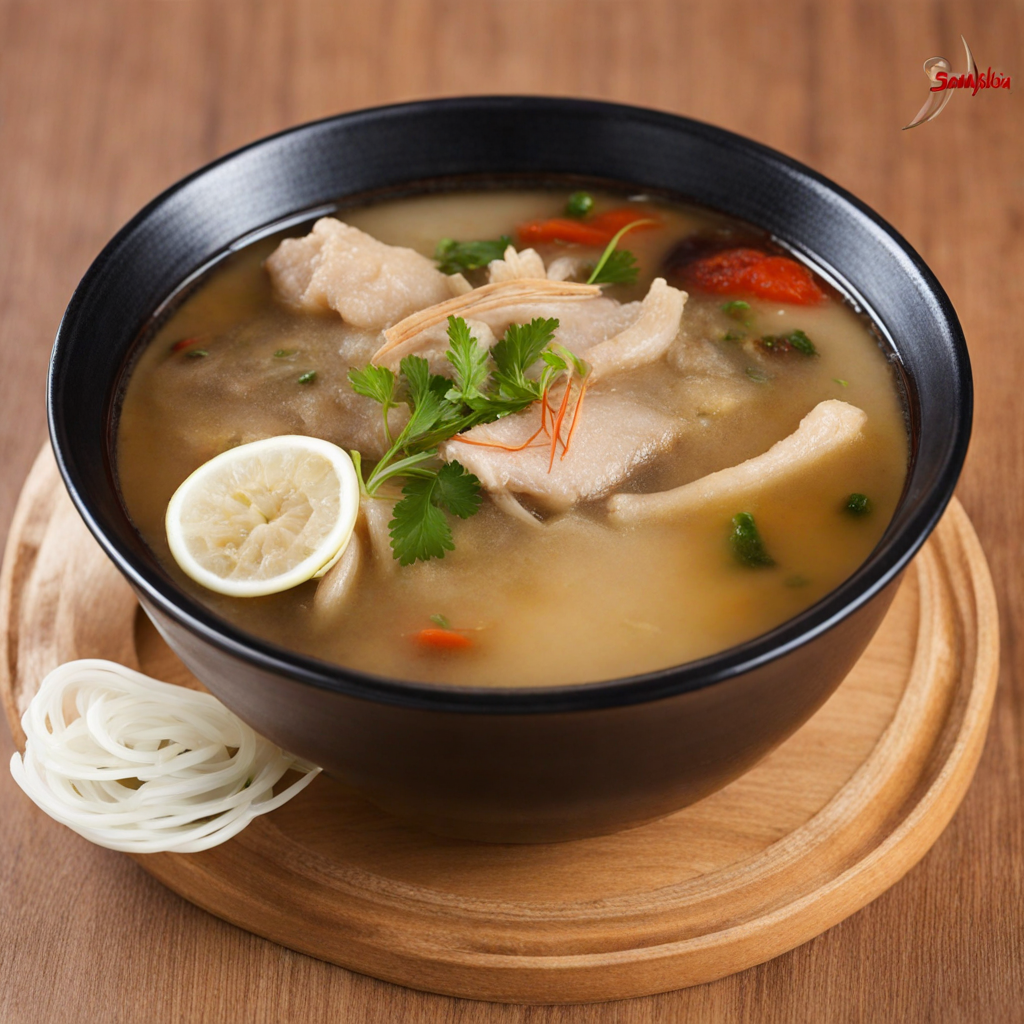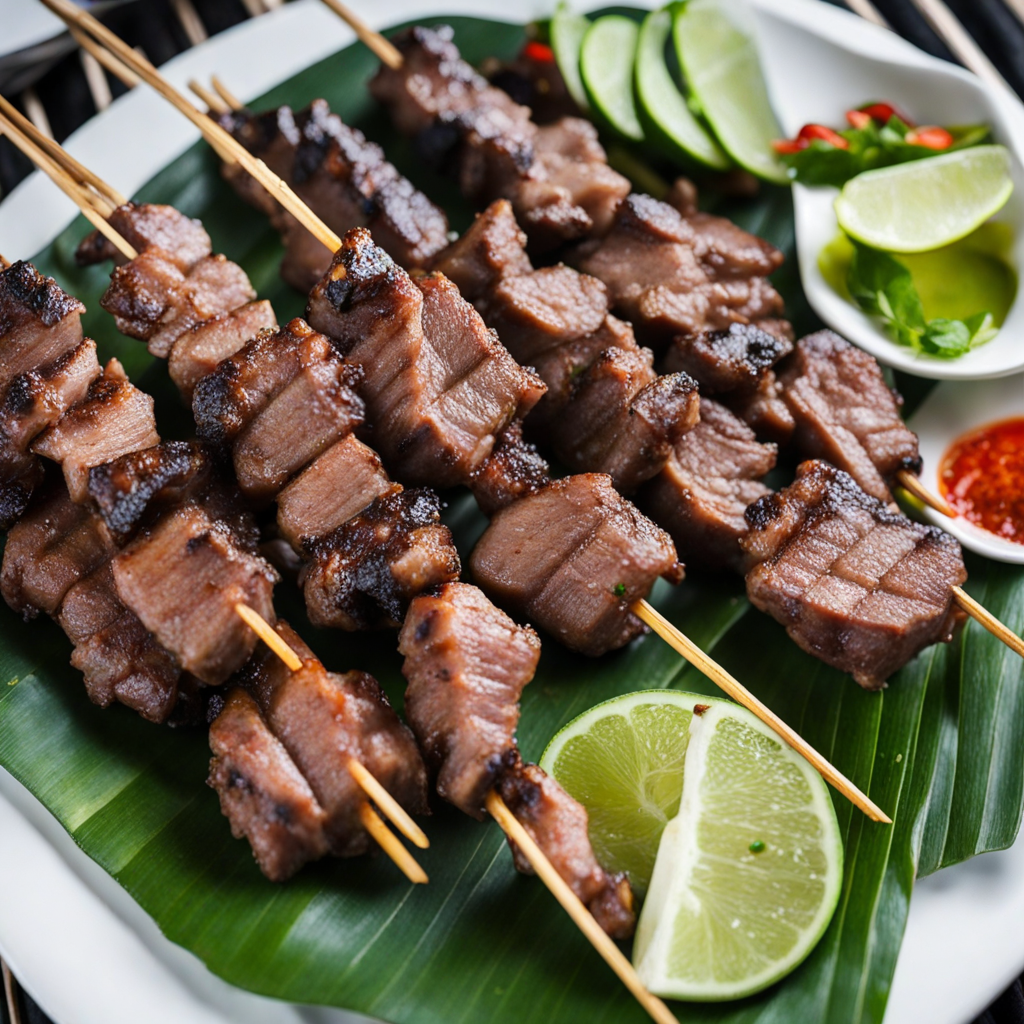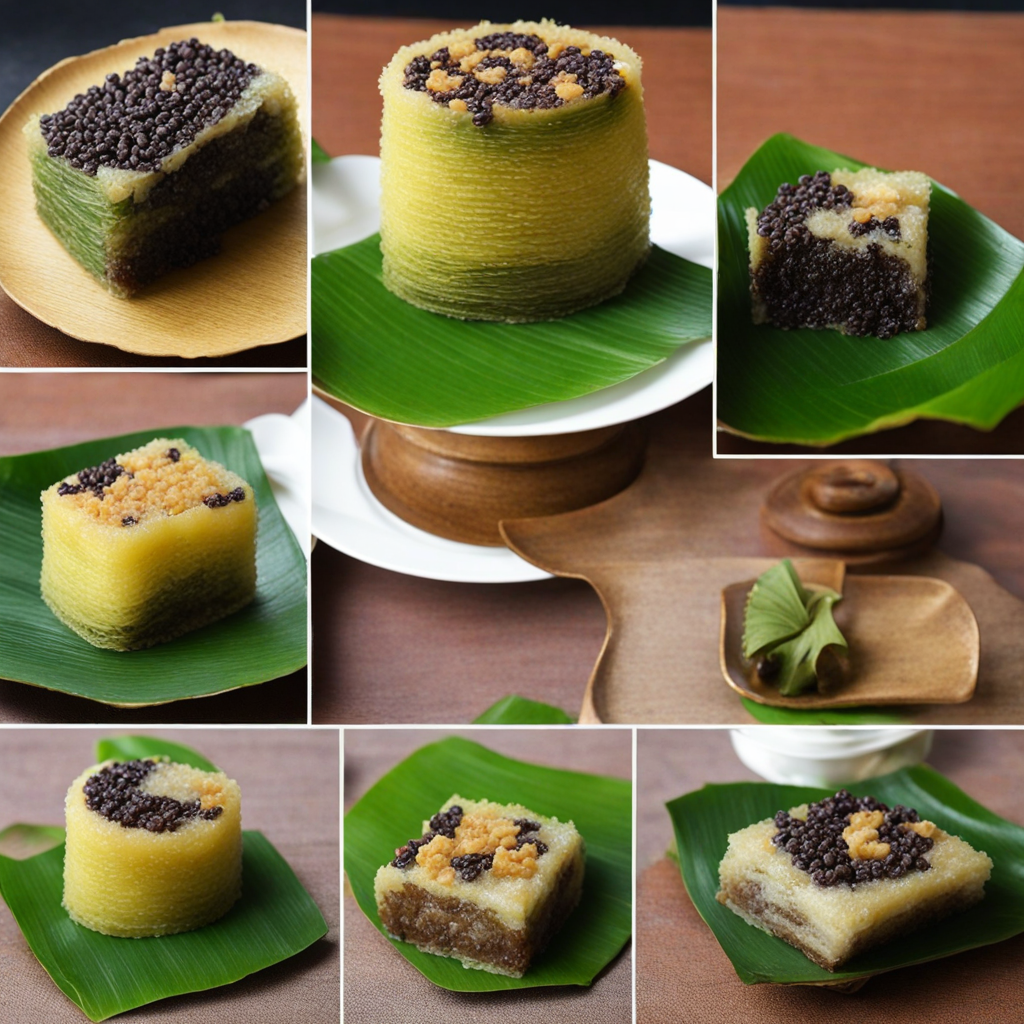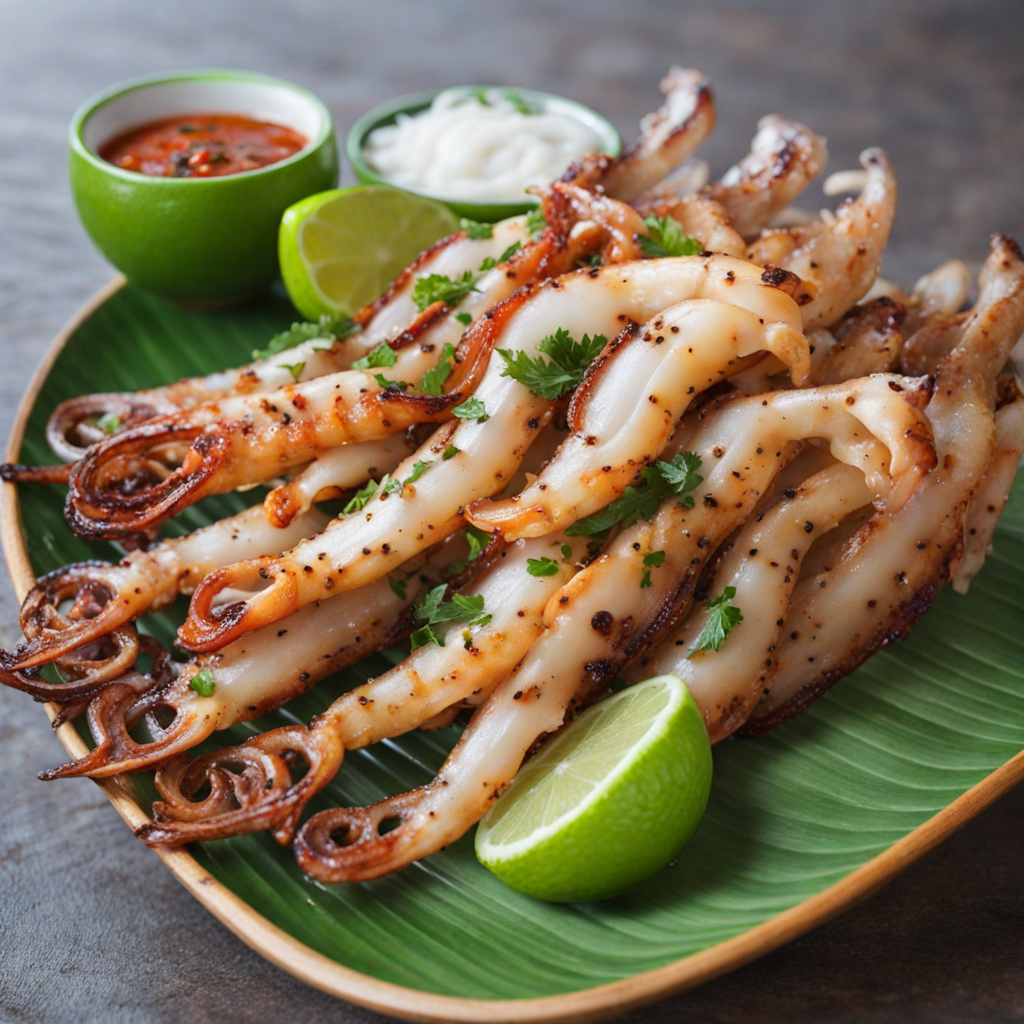Samlor Machu
Samlor Machu is a vibrant and flavorful Cambodian soup that embodies the essence of the country's culinary heritage. Its name translates to "sour soup," which is a fitting description of its delightful balance of tangy and savory flavors. The dish typically features a rich broth made from a base of fish or chicken, infused with a medley of fresh herbs and spices, such as lemongrass, galangal, and kaffir lime leaves. The inclusion of tamarind or lime juice adds a distinct sourness that brightens the entire dish, making it refreshing and invigorating. The heart of Samlor Machu lies in its variety of vegetables, which often includes okra, tomatoes, and eggplant, offering a colorful and nutritious profile. Tender pieces of fish or chicken are gently simmered in the broth, absorbing the aromatic flavors while providing a satisfying protein element. The soup is typically garnished with fresh cilantro and served hot, making it a perfect dish for sharing among family and friends during communal meals. Each bowl reflects the use of locally sourced ingredients, enhancing the authenticity and quality of this beloved Cambodian dish. What sets Samlor Machu apart is its versatility; variations abound depending on regional ingredients and personal preferences. Some versions may include additional elements like pineapple for a hint of sweetness, or even fermented fish to deepen the umami flavor. This adaptability allows diners to experience a unique twist on the classic sour soup, inviting them to explore the rich tapestry of Cambodian flavors. For those looking to embark on a culinary adventure, Samlor Machu promises a delightful journey through the tastes of Cambodia.
How It Became This Dish
The History of 'សម្លរម្ជូរ' (Samlor Mchou) in Cambodian Cuisine Origins and Ingredients Samlor Mchou, often translated as "sour soup," is a quintessential dish in Cambodian cuisine, characterized by its vibrant flavors and use of fresh, local ingredients. The term "samlor" refers to soup, while "mchou" translates to sour, reflecting the dish's hallmark tanginess. The origins of Samlor Mchou can be traced back to the rich agricultural practices and diverse ecosystems of Cambodia, where lush rivers, fertile plains, and abundant forests provide a cornucopia of culinary resources. Historically, the soup has roots in Khmer culinary traditions that date back to the Angkor period (9th to 15th century), during which the Khmer Empire flourished and developed sophisticated agricultural techniques. Rice, fish, and vegetables were staples, and the use of herbs and spices was integral to flavoring dishes. Samlor Mchou embodies these principles, utilizing a base of fish or meat, often catfish or chicken, along with an array of vegetables such as water spinach, eggplant, and fresh herbs like lemongrass and basil. The sourness of the soup typically comes from the addition of tamarind, lime juice, or sometimes even fermented fish sauce, which contributes not only to the flavor but also to the dish’s complexity and depth. The incorporation of these sour elements is reflective of the broader Southeast Asian culinary tradition, where balancing sweet, sour, salty, and bitter flavors is a hallmark of the region’s gastronomy. Cultural Significance Samlor Mchou holds a special place in Cambodian culture, serving as both a comfort food and a symbol of home. Like many traditional dishes, it is often prepared during family gatherings and festive occasions, reinforcing familial bonds and cultural identity. The soup is frequently enjoyed with rice, making it a staple in Cambodian households. In the context of Cambodian festivals and religious ceremonies, Samlor Mchou may be prepared with specific ingredients that hold symbolic meanings. For instance, during the Khmer New Year (Chaul Chnam Thmey), families might include certain types of fish or vegetables believed to bring prosperity and good fortune in the coming year. This connection to rituals and celebrations ties the dish to the agricultural calendar and the cycles of life in Cambodian society. Furthermore, the preparation of Samlor Mchou is often a communal activity, where members of the family gather to cook together, sharing stories and knowledge. This aspect of communal cooking highlights the dish's role in fostering social cohesion and preserving culinary heritage. Evolution Over Time As Cambodia has undergone significant historical changes, particularly during the Khmer Rouge regime in the 1970s, the preparation and consumption of Samlor Mchou have also evolved. The brutal upheaval and subsequent genocide disrupted agricultural practices and led to a dramatic shift in the availability of ingredients. Many traditional recipes were lost, and the art of cooking was affected by the trauma of that period. However, in the years following the regime's fall, there has been a resurgence of interest in traditional Cambodian cuisine, including Samlor Mchou. Chefs and home cooks alike have sought to revive and reinvent recipes, often with a focus on authenticity and sustainability. Local markets have re-emerged, providing access to fresh produce and fish, allowing the dish to reclaim its status in Cambodian culinary culture. Today, Samlor Mchou is not only a beloved home-cooked meal but also a popular dish served in restaurants, both in Cambodia and among Cambodian communities abroad. The globalization of food culture has led to variations of the soup, with some chefs experimenting with fusion elements while still honoring the traditional roots. For instance, the incorporation of modern cooking techniques and ingredients from other cuisines has led to innovative interpretations of Samlor Mchou that appeal to contemporary palates. Regional Variations In Cambodia, various regions have developed their own interpretations of Samlor Mchou, influenced by local ingredients and culinary preferences. For example, in coastal areas, seafood versions of the soup are more prevalent, incorporating shrimp and crab, while in inland regions, freshwater fish may be the star ingredient. Additionally, the choice of souring agents can vary; some regions may prefer tamarind, while others might lean towards lime or vinegar. This regional diversity adds depth to the dish, highlighting the adaptability of Cambodian cuisine and its ability to evolve while remaining rooted in tradition. The variations of Samlor Mchou reflect the unique agricultural practices and cultural influences found throughout the country. Conclusion In summary, Samlor Mchou is not just a dish but a reflection of Cambodia's rich culinary heritage, its cultural identity, and its resilience through history. From its origins in the fertile landscapes of the Khmer Empire to its role in contemporary kitchens, the soup embodies the flavors and traditions that have shaped Cambodian society. It serves as a reminder of the importance of community, family, and the continuous evolution of food culture. As Cambodia continues to embrace its culinary roots while adapting to modern influences, Samlor Mchou remains a beloved dish that connects generations and celebrates the country’s rich history. Whether enjoyed at a family meal or in a bustling restaurant, the essence of Samlor Mchou endures, inviting everyone to savor the flavors of Cambodia.
You may like
Discover local flavors from Cambodia







